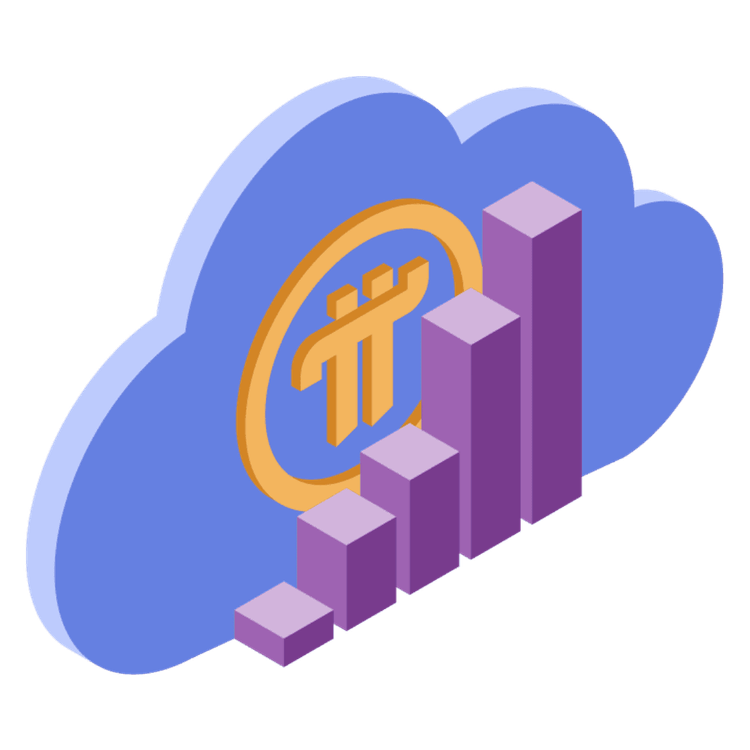It’s a mobile-first cryptocurrency project designed to let everyday people earn digital money using only their smartphones. Launched by a team of Stanford PhDs in 2019, Pi Network addresses the two biggest barriers in cryptocurrency: the high cost of hardware and energy-intensive mining. In this article, you’ll learn how Pi makes crypto accessible, why millions have joined its ranks, and which real-world use cases could propel it into mainstream adoption.
By the end, you’ll understand Pi’s unique Security Circle mechanism, the hurdles behind its delayed mainnet launch, and the potential pathways for Pi coins in decentralized finance. You’ll also get a peek at prospects—from ecosystem development to investor considerations—and walk away with concise answers to the top five FAQs. Ready to see how a simple tap can change the way you think about money? Let’s jump in.
Accessibility and Inclusivity
In traditional blockchain networks, mining often involves investing in specialized rigs that cost thousands of dollars and consume significant amounts of electricity. Pi Network flips that model by allowing you to “mine” Pi coins with a single tap on a mobile app every 24 hours. This design strategy eliminates technical barriers that deter many newcomers, particularly those in regions with unreliable power grids. As a result, Pi opens the door to a global audience that would otherwise never touch cryptocurrency.
Beyond tapping, Pi’s referral-based Security Circle adds a layer of social trust that enhances network security without centralized control. By inviting friends into your circle, you create a personal web of trusted validators, turning social connections into a robust consensus mechanism. Early adopters report feeling more invested, as every friend they onboard strengthens both security and community. Ultimately, Pi’s approach fosters inclusivity by blending blockchain innovation with human relationships.
Zero Financial Entry Barrier
One of Pi’s most disruptive promises is zero financial entry cost. You don’t need to buy a single ASIC miner or stake any tokens to begin accumulating Pi. The absence of upfront fees distinguishes Pi from Bitcoin or Ethereum, where miners risk substantial hardware expenses before seeing a return. For many in developing economies, the idea of earning digital assets without spending cash is revolutionary.
That said, Pi isn’t free of effort: you must engage daily to maximize your mining rate and maintain your Security Circle. This small time investment replaces large capital outlays, making the experience feel more like a social game than a financial gamble. Many pioneers describe it as “crypto lite”—a gentle introduction that steers clear of complex wallets or steep learning curves. If you’ve ever wished crypto were more accessible, Pi might be the answer you've been waiting for.
User Growth and Adoption
Pi’s viral referral engine has driven explosive growth, with user counts reportedly exceeding tens of millions. I recall a conversation with a friend in Nairobi who joined Pi after seeing a colleague mine Pi coins while waiting for a matatu in rush-hour traffic. Within days, she had formed her first Security Circle, and soon, our whole group was tapping the app like clockwork. This word-of-mouth momentum mimics the early days of social media platforms, where network effects drove rapid adoption.
Some data points—shared at Pi’s developer community meetups—suggest that over 80% of users come through direct invitations rather than random discovery. That ratio underlines the importance of personal connections and trust in driving new sign-ups. Local Pi meetups, from Jakarta to Johannesburg, have become micro-communities where novices learn best practices in mining—observing how these grassroots efforts scale will be critical to Pi’s long-term viability.
Community Engagement
Active community engagement keeps Pi’s engine running, whether through Telegram groups dissecting the app’s code or social media channels sharing mining tips. The Pi Core Team holds regular “Ask Me Anything” sessions to gather feedback and refine functionality—a rare level of transparency in the crypto world. I’ve seen community members publish tutorial videos that break down each onboarding step, making the process feel less intimidating. This social layer transforms Pi from a solo mining app into a collaborative experiment in digital money.
Participation isn’t limited to techies. Artists design Pi-themed memes, local entrepreneurs brainstorm business pilots, and educators discuss incorporating Pi into classroom demonstrations. These diverse perspectives inject creativity and enthusiasm, generating ideas that a purely corporate-driven project might miss. In many ways, Pi’s social fabric echoes the early open-source software movement, where community contributions drive innovation. If you’ve ever wanted to be part of a ground-floor experiment, Pi’s social ecosystem is a strong draw.
Current Challenges and Criticisms
Critics often point to the lack of a fully operational mainnet and the absence of Pi coins on major exchanges, labeling it more “promise” than “product” at this stage. Some pundits argue that mining rates—set at a fixed schedule—could flood the market with Pi coins, diluting their value before real demand materializes. Others worry that mobile mining may not scale once millions of transactions are processed on the network.
Trust is another sticking point: while Security Circles offer an innovative trust model, they rely heavily on user honesty and active participation. Inactive or malicious nodes could introduce vulnerabilities that can only be revealed by a broader mainnet test. As you evaluate Pi, it’s crucial to weigh these structural and economic risks against its inclusive appeal. Anyone joining now should do so with eyes open and expectations calibrated for a project still in beta.
Mainnet Launch Delays
Pi’s mainnet rollout has slipped multiple times, moving from an initial target of late 2021 to a still-unconfirmed date. Each delay reflects the team’s emphasis on security audits, stress testing, and regulatory alignment. While caution is commendable—no one wants a repeat of high-profile network hacks—it also tests community patience. Early adopters who’ve tapped daily for years now eagerly await the point when Pi coins become transferable.
Transparency around these delays matters more than the delays themselves. Clear communication—complete with technical roadmaps and third-party audit reports—can sustain trust during extended beta phases. Some community forums have seen heated debates over whether the Core Team is moving too slowly. If Pi can maintain an open dialogue and demonstrate steady progress, it stands a better chance of retaining its user base through the waiting game.
Potential Use Cases
Imagining Pi’s future begins with use cases that play to its mobile-centric strengths and social architecture.
Peer-to-Peer Microtransactions
Splitting a bill at a local café could become frictionless once Pi gains real-world acceptance. Small businesses might offer discounts to Pi payers, driving adoption through incentives rather than mandates. I’ve talked to a coffee shop owner who’s running a private pilot, offering a free pastry to Pi miners, and the buzz around the experiment has been electric.
Digital Citizenship
In communities with unstable banking, Pi could serve as a temporary store of value or a bridge currency. Humanitarian groups might distribute Pi coins during relief efforts, enabling recipients to access services in a cash-averse environment. These creative trials showcase Pi’s adaptability and hint at use cases that go beyond speculation. If executed well, such pilots can shift Pi from a novelty to an everyday tool.
Decentralized Finance (DeFi)
In the DeFi arena, Pi has the potential to offer a gentler on-ramp compared to gas-heavy Ethereum protocols. Imagine staking Pi in a simple mobile wallet to earn yield or securing microloans backed by collateralized Pi. The Security Circle model could underpin trustless lending pools without relying on centralized custodians. I spoke with a developer who is prototyping a Pi-based savings app that automatically diversifies user holdings across partner platforms—proof that the Pi ecosystem is already feeling the pull of DeFi.
Accessibility remains a core advantage: if Pi-based DeFi apps can strip out the complexity of smart contract fees, they could attract users who’ve been shut out by high entry costs elsewhere. The key will be seamless integration into the Pi Wallet and rigorous security audits to win user confidence. Should these building blocks align, Pi might carve out its niche in the crowded DeFi landscape.
Future Prospects
The long-term trajectory of Pi Network depends on the growth of its ecosystem and real-world traction. To flourish, Pi needs a robust suite of third-party apps—everything from merchant point-of-sale systems to freelance marketplaces that accept Pi as payment. Open-source hackathons and developer grants could catalyze this innovation, much like early Android developer programs spurred a thriving app store. Outside support from investors or institutions could also accelerate development and broaden Pi’s impact.
Regulatory clarity will also play a decisive role. As governments around the world grapple with crypto frameworks, Pi’s compliance strategy must strike a balance between decentralization and legal requirements. The Core Team’s outreach to regulators underscores its awareness of this challenge. If Pi can secure favorable rulings in key markets, it will pave the way for mainstream adoption.
Development of Ecosystem
Building a vibrant ecosystem means onboarding more than just coders—it requires merchants, service providers, and content creators to accept Pi tokens. Pilot programs in select cities are already testing loyalty schemes and digital coupons powered by Pi, providing valuable insights into user behavior and technical bottlenecks. Community-run hackathons have produced promising prototypes for peer-to-peer commerce, though most remain in testnet limbo. Incentivizing real-world pilots through revenue sharing or token grants could help kick-start broader adoption.
Support tools, such as block explorers, analytics dashboards, and open APIs, will be essential for developers and businesses alike. A transparent, permissionless environment where anyone can build on Pi fosters creativity and reduces entry friction. Observing which projects gain traction—and understanding why—will reveal the features users value most.
Prospects for Investors
For investors, Pi presents both promise and uncertainty. Without a live mainnet or exchange listing, Pi coins currently trade only in informal peer-to-peer channels where prices are speculative and volatile. This early-stage trading environment can resemble pre-IPO markets, offering high upside at the cost of significant risk. If you choose to buy Pi IOUs or futures, do so with caution and allocate only what you can afford to lose.
Long-term value hinges on Pi’s ability to deliver utility and network effects that outpace inflation from daily coin minting. Monitoring official token release schedules and community transparency reports will help gauge inflationary pressures. Investors should also track partnerships and pilot results as leading indicators of actual demand in the real world.
Conclusion
Pi Network stands out as a bold experiment in democratizing cryptocurrency, using mobile mining and social trust to break down traditional barriers. Although the project remains in beta, its emphasis on inclusivity—zero entry cost, daily engagement, and referral-driven security—has already attracted a global army of pioneers. The delayed mainnet launch and questions around tokenomics warrant a cautious approach, but the potential use cases in DeFi, microtransactions, and digital citizenship paint an exciting future.
If you’re curious about crypto but deterred by complexity or cost, Pi offers a friendly first step. By tapping your phone once a day and inviting trusted friends, you become part of a living experiment in digital money. Whether Pi ultimately becomes a mainstream currency or an interesting footnote in blockchain history, joining today lets you shape its evolution. Ready to mine some Pi?




